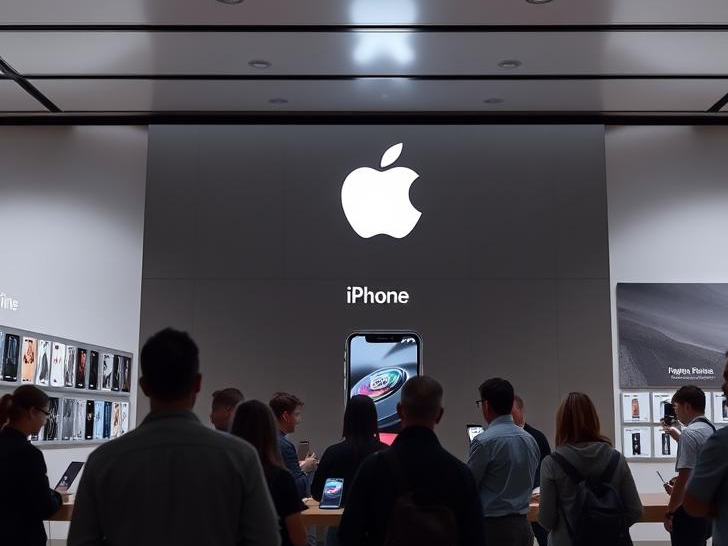Did You Know a 1% Price Boost Can Increase Profits by 11%? Let’s cut to the chase: Your pricing strategy can make or break your business. According to McKinsey, optimizing your pricing strategy is the fastest way to boost profits. Even a 1% price improvement can increase earnings by 11%. Yet, 85% of companies struggle to set prices effectively (Harvard Business Review). Are you leaving money on the table? Whether you’re a startup or a Fortune 500, mastering your pricing strategy business plan is non-negotiable. In this guide, we’ll dissect the science behind pricing, share real-world success stories, and reveal how to dominate your market. Ready to turn pricing into your superpower? Let’s dive in.
How Apple’s Value-Based Pricing Made It a $2.7 Trillion Giant

Apple’s pricing strategy is legendary. While competitors like Samsung focus on cost-plus pricing, Apple charges a premium by tapping into perceived value. The iPhone’s production cost? Roughly $490. The retail price? $999+. By positioning itself as a luxury tech brand, Apple commands a 40% profit margin, triple the industry average (Statista). Their pricing strategy business plan hinges on exclusivity, innovation, and emotional appeal. Result? A loyal customer base willing to pay top dollar. The lesson? Price isn’t just about costs; it’s about what customers believe your product is worth.
What Is a Pricing Strategy? The 5 Most Common Pricing Strategies

Understanding your pricing strategy is essential if you want to stand out in a crowded marketplace. At its core, a pricing strategy involves setting a price point based on market research, production costs, competitor analysis, and consumer behavior. A strong pricing approach not only ensures profitability but also builds brand credibility and customer loyalty. Below are the five most common pricing strategies that businesses use:
1. Cost-Plus Pricing
(i) Market Research & Analysis
A pricing strategy involves setting prices based on thorough market research, production costs, competitor pricing, and consumer behavior to ensure competitiveness and profitability.
(ii) Profitability & Brand Credibility
A strong pricing approach not only maximizes profits but also enhances brand credibility and fosters customer loyalty by aligning prices with perceived value.
(iii) Common Strategies
The five most common pricing strategies include cost-plus pricing, competitive pricing, price skimming, penetration pricing, and value-based pricing, each tailored to different business goals and market conditions.
2. Competitive Pricing
(i) Competitor-Based Pricing
Competitive pricing involves setting prices based on what competitors charge, ensuring businesses stay aligned with market standards and avoid losing customers to rivals.
(ii) Popular in Crowded Markets
Around 60% of companies in highly competitive sectors like retail and electronics use this strategy to maintain market share and stay relevant.
(iii) Best for Low Differentiation
This approach works best in markets where products are similar, as constant competitor monitoring is required to adjust prices effectively.
3. Price Skimming
(i) High Initial Pricing
Price skimming involves launching a new product at a high price, targeting early adopters willing to pay a premium, and then gradually lowering the price as the product gains wider acceptance.
(ii) Boosts Early Profits
Companies using this strategy can achieve a profit increase of up to 12%, as seen in industries like tech, where early adopters drive initial revenue.
(iii) Ideal for Innovative Products
This approach works best for innovative products with short lifecycles, such as smartphones or gaming consoles, where demand is high at launch but declines over time.
4. Penetration Pricing
(i) Low Initial Pricing
Penetration pricing involves setting a low initial price to attract customers quickly, making it easier to enter competitive markets and gain traction.
(ii) Speeds Up Market Entry
A 2022 study found that this strategy can reduce market entry time by 30%, helping businesses establish a foothold faster.
(iii) Focus on Long-Term Growth
While it may reduce short-term profits, the goal is to build a large customer base, leading to sustainable long-term revenue and market dominance.
5. Value-Based Pricing
(i) Customer-Centric Pricing
Value-based pricing focuses on setting prices according to the perceived value of the product or service to the customer, rather than just production costs or competitor prices.
(ii) Boosts Revenue and Margins
Companies using this strategy can achieve a revenue uplift of 15% and increase profit margins by an average of 18%, as reported by Forrester.
(iii) Aligns with Customer Expectations
This approach works best for brands that emphasize quality, exclusivity, or unique benefits, ensuring prices reflect what customers are willing to pay.
A Winning Pricing Strategy: 3 Pillars You Can’t Ignore

Your pricing strategy business plan needs three pillars:
- Data-Driven Decisions: Use tools like Pricefx or Prisync to analyze competitors and demand.
- Customer Insights: 60% of consumers say price is their top purchase driver (HubSpot). Survey your audience.
- Flexibility: Airbnb uses dynamic pricing, adjusting rates daily based on demand.
Innovative Pricing Strategies: Tactics That Transform Sales
1. Psychological Pricing: Why $9.99 Works Better Than $10
The brain processes $9.99 as “cheap” and $10 as “expensive.” This trick boosts sales by 24% (Journal of Consumer Psychology). Amazon uses it relentlessly, $29.99 feels like a steal vs. $30.
2. Dynamic Pricing: How Uber Doubles Prices During Rush Hour
Uber’s surge pricing increases fares during peak demand. Controversial? Yes. Profitable? Absolutely. Dynamic pricing can lift revenue by 10% (MIT Sloan). Airlines like Delta use it too, a flight from NYC to LA can range from $200 to $800 based on timing.
3. Bundle Pricing: McDonald’s “Happy Meal” Effect
Selling products together increases perceived value. McDonald’s Happy Meals (burger + fries + toy) account for 20% of sales (Forbes). Adobe’s Creative Cloud bundle ($54.99/month) boosted subscriptions by 30%.
4. Freemium Model: How Spotify Turned Free Users Into Paying Fans
Offer a free basic version, then upsell premium features. Spotify’s freemium model converted 46% of free users to paid subscribers (Business of Apps). Dropbox grew 3900% in 15 months using this strategy.
5. Geographic Pricing: Why a Coke Costs $1 in the US and $0.50 in India
Adjust prices based on location. Coca-Cola uses this to cater to local purchasing power. Starbucks charges $5 for a latte in NYC but $3 in Mumbai.
6. Time-Based Pricing: How Disneyland Masters Peak Pricing
Disneyland charges $149 on weekends vs. $104 on weekdays. This strategy balances demand and maximizes revenue. Hotels use it too, rates spike during holidays.
Developing Your Pricing Strategy for Market Success
- Companies updating pricing tactics see a 20% revenue increase.
- Understanding cost structure and break-even points is essential.
- Competitive analysis helps set market-relevant prices.
- Pricing strategies must evolve with market trends and feedback.
Crafting a Pricing Strategy Business Plan
- Collect data on costs, demand, and competition.
- Choose a pricing model that aligns with business goals.
- Set clear objectives, KPIs, and contingency plans.
- Regularly update pricing to stay competitive.
Common Pitfalls in Your Pricing Strategy Business Plan
- Ignoring market research leads to outdated pricing.
- Overcomplicating prices can confuse customers.
- Not adjusting for economic shifts weakens the strategy.
- Setting prices too high or low affects revenue & perception.
Advanced Techniques in Pricing Strategy for Revenue Growth
- Dynamic pricing adjusts based on demand and competition.
- Bundling and tiered pricing increase perceived value.
- Subscription models ensure consistent revenue streams.
- AI-driven analytics help optimize real-time pricing.
The Future of Pricing Strategy in a Digital World
- AI and machine learning are shaping dynamic pricing.
- 65% of companies plan to update pricing strategies.
- Digital payments are influencing real-time price changes.
- Personalized pricing models enhance customer engagement.
Implementing Your Pricing Strategy Business Plan Effectively
- Ensure all teams understand pricing objectives.
- Regular training aligns strategy with execution.
- Track performance using dashboards and KPIs.
- Make real-time adjustments to stay competitive.
Measuring Success with Your Pricing Strategy Business Plan
- Monitor revenue growth, profit margins, and CAC.
- Harvard study: Companies tracking KPIs improve pricing by 20%.
- Customer feedback helps refine pricing decisions.
- Data-driven updates ensure long-term strategy success.
Real-World Pricing Strategy Examples That Crushed It
1. Tesla’s Price Skimming Playbook
Tesla’s Model S launched at $94,000, targeting early adopters. As production scaled, prices dropped to $79,990. The result? Tesla now dominates 70% of the U.S. EV market (Edmunds).
2. IKEA’s Cost-Plus Dominance
IKEA uses flat-pack furniture to slash costs, then adds a 17% markup. Their pricing strategy business plan keeps prices 30% lower than rivals, driving $45.4B in annual sales (IKEA Annual Report).
3. Nike’s Value-Based Sneaker Hype
Nike sells limited-edition sneakers (like the $220 Air Jordans) as cultural icons. Their pricing strategy banks on scarcity and brand loyalty, generating $46.7B in revenue (Nike Financial Report).
Final Thoughts: Your Pricing Strategy Is Your Profit Engine
Your pricing strategy isn’t just about setting numbers; it’s the key to your profitability and competitive edge. Businesses that optimize pricing can boost revenue by 20% and increase profit margins by 11% (McKinsey). Whether you adopt value-based pricing, dynamic adjustments, or psychological tactics, the key is to stay data-driven, adaptable, and customer-focused. Analyzing competitors, testing strategies, leveraging AI for real-time optimizations, and monitoring key performance indicators like profit margins, CAC, and customer retention can set you apart. As digital trends reshape industries, companies that innovate their pricing models, like Apple, Tesla, and Nike, continue to dominate. Your pricing strategy is more than a number; it’s your strongest profit driver. Fine-tune it, adapt, and watch your business thrive.





